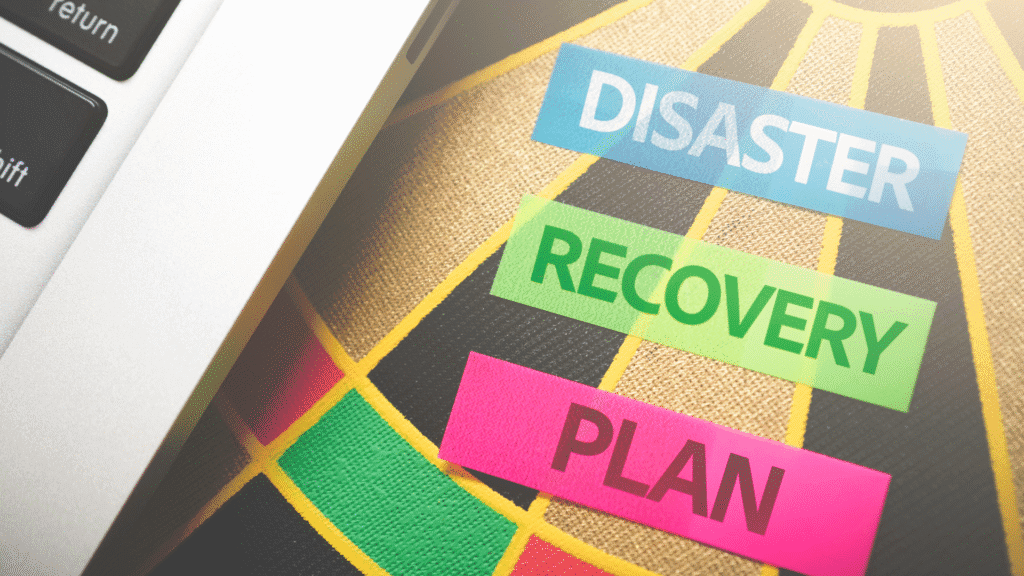The early days of March 2020 have thrust the world into an unprecedented crisis, changing our day-to-day lives almost by the minute. I was on a long-planned family vacation when these global shifts rapidly accelerated. The experience of navigating that uncertainty with my family provided a real-time masterclass in crisis leadership. While the specific circumstances were unique, the principles we applied remain profoundly relevant for any Small or Medium-Sized Business (SMB) leader facing unexpected challenges or turbulent times.
My Story
With our trip planned to depart on March 12 from Hamilton, Ontario to Orlando, Florida, we watched the news carefully with news of COVID-19 outbreaks starting in new corners of the world. Iran and Italy were the new hot spots and we were starting to see cases expand in Canada as well.
On the morning of March 12, my wife and I sat down together and decided that based on what we were seeing that we felt comfortable continuing with our trip. The spread in Canada was slow. Florida had very few cases and mostly around the cruise ships. We were staying in a house with family, not a resort or hotel with lots of people around. It seemed like the rational answer that morning.
On the airplane as we taxied to the runway the person seated behind me said, “Well the kids will be happy… the schools are closed for two weeks after March Break”. It was too late for me to get any more details because I’d already switched to airplane mode, but it was clear already that things were moving more quickly than we could imagine.
Arriving in Orlando I was able to check the news and confirm the steps that the Province of Ontario was taking, but things still seemed relatively calm so we continued on, picked up our rental car, and headed to the house.
Over the next several days things started moving even more quickly. Disney World was closing. The Kennedy Space Center was closing. Social distancing became common vocabulary. And then the borders started closing.
Every day we checked in together on what the right next step was. Get earlier flights? Plan to drive home? Stay put and wait? Every day we adjusted our approach based on the best available information. And ultimately we came home one day earlier than planned. The situation had just changed too much.
Our Decisions
In times of emerging crisis it may not be clear that a crisis is even happening… Focusing on the recent past clouds your judgement and takes away important energy. You need your wits about you to deal with the current information and the next decision.
And so that’s what we did. Every day and sometimes multiple times a day we checked in together. We sourced the most accurate information sources. We stayed away from emotion and speculation. We focused on the facts.
With the closure of Disney World and Kennedy Space Center we adjusted our schedules, eliminated one of the things we were going to do, and then prepared everyone to manage the risk. We were able to get to Disney before the closure, but we attended with individual bags of Lysol Wipes and hand sanitizer, made regular visits to the washrooms to wash hands, and reinforced to children to avoid touching as much as possible and keep their hands away from their faces. Much like the choice to leave, looking back this seems like a decision that had some risk with the knowledge we have now, but it was rational and reasonable at the time. I wouldn’t change it.
As more information emerged and the Canadian government issued instructions to those who were out of the country, we also had to make choices. The alarmist messaging was that the government told us all to come home now. The actual messaging from the government was to assess commercial options to come home and if they became more limited to consider coming home early. So that’s what we did.
Our flights were still scheduled. There were many options to get home. There was no reason to strain the system and rush things. So we didn’t. But we did choose to essentially isolate ourselves with our family in the rented house and minimize our public activities. And that was also the right choice. Based on the best information at the time.
When word came that the US and Canada were closing borders, we made a different decision. We moved our flights up to the next available flight even though it was only 24 hours before our planned departure date. Surely not a significant benefit to get out one day earlier, but in our minds it was time. So we did it.

Our Crisis Leadership Approach (Applicable to Any SMB Challenge):
At every stage, we had to make tough decisions, following a consistent approach:
- Understand the Facts:
- Don’t get sucked into alarmist messages, opinions, or speculation. Seek out the most accurate, reliable information sources. Read carefully; words matter. Build a clear understanding first. In a business or IT crisis, this means getting accurate diagnostics, understanding the full scope of a system outage or market shift, and not relying on hearsay or incomplete data.
- Understand the Specific Decision Required:
- With facts in hand, assess your unique situation and the immediate decision needed. What facts are most critical for you right now? What’s just noise? Simplify the decision to avoid analysis paralysis. For an SMB facing a cybersecurity breach, this might be: “Do we shut down systems now? Do we engage external experts immediately? How and when do we communicate to customers?”
- Make a Decision (Action is Critical):
- This seems obvious, but a decision must actually be made. Recognize that not making a decision is, in itself, a decision; often with negative consequences in a crisis. Take informed action.
- Check In Regularly, Reflect, and Repeat (Iterate):
- The path through a crisis is rarely linear. Continuously check in, reflect on your last decision’s impact, and monitor the evolving situation. As new information and facts emerge, repeat this cycle. This isn’t about endlessly revisiting past decisions with regret, but about making the next best decision based on current reality.
- Don’t Be Afraid to Be “WRONG” (in Hindsight):
- Working through decisions one by one, you will inevitably make some that, viewed with perfect hindsight, might appear “wrong.” Remember, every choice was made based on the best information available at that moment. You can’t change the past. Focus only on making new, informed decisions based on the current facts and situation.
- Stay Calm (Manage Emotions):
- Decisions in a crisis cannot be effectively made from a place of high emotion. If you don’t stay calm, emotional decision-making is almost guaranteed. Stick to facts. Use neutral language. Check in with how others are feeling about the facts of the moment, and understand what your team needs to feel supported and focused.
What’s Next? (The Enduring Principles)
To be honest I don’t know. But I know I’ll continue to deal with the evolving situation both at home and at work in the same way because it is working.
My family is home, safe, and as calm as can be expected about spending the next 14 days in self-isolation in a small house that’s mid-renovation.
My team at work is focused on what matters, driving to results, and collaborating well to support our clients even though we are learning to work entirely remotely and having some issues with communication tools at times.
I’m surrounded by an amazing family and work team that are focused on getting us through this crisis together. We support each other. We check in. We focus on facts. We drive to decisions. And we are not afraid to change course.
These are unprecedented times to say the least. I think the pace of change is only going to increase. The demand for leadership is higher today than ever before. And I’m proud to be part of the family and team that I get to be who are providing that leadership.
Stay safe. And lead decisively.


Leave a Reply